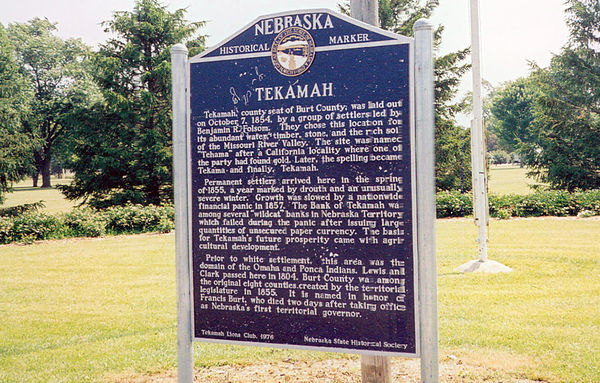Our Historical Markers across Nebraska highlight fascinating moments and places in our state’s past. Today, we’re talking about the history of the town of Tekamah. Or was it Tehama? Maybe Tekama?
Marker Location
700-798 N 12th St, Tekamah, Burt County, Nebraska. View this marker’s location.
Marker Text
Note: the word Indian is used instead of Native American as it was the norm at the time.
Tekamah, county seat of Burt County, was laid out on October 7, 1854, by a group of settlers led by Benjamin R. Folsom. They chose this location for its abundant water, timber, stone, and the rich soil of the Missouri River Valley. The site was named “Tehama” after a California locality where one of the party had found gold. Later, the spelling became Tekama and finally, Tekamah.
Permanent settlers arrived here in the spring of 1855, a year marked by drouth and an unusually severe winter. Growth was slowed by a nationwide financial panic in 1857. The Bank of Tekamah was among several “wildcat” banks in Nebraska Territory which failed during the panic after issuing large quantities of unsecured paper currency. The basis for Tekamah’s future prosperity came with agricultural development.
Prior to white settlement, this area was the domain of the Omaha and Ponca Indians. Lewis and Clark passed here in 1804. Burt County was among the original eight counties created by the territorial legislature in 1854. It is named in honor of Francis Burt who died two days after taking office as Nebraska’s first territorial governor.





